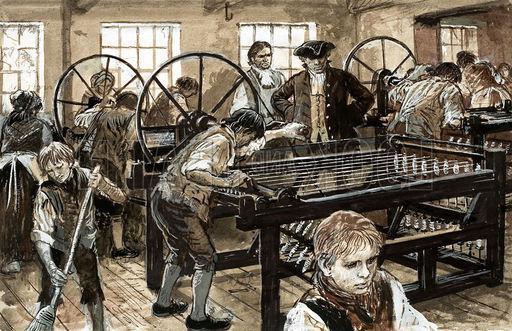The term legal entity is fixed at the level of the Civil Code. Organizations with this status should have the rights to own or operative, economic management of property, be responsible for their obligations with this property. What does it mean? Such companies can dispose of property, if it is owned, to fulfill all obligations stipulated by the status. All legal entities have the right to appear in court proceedings, not only as a plaintiff, but also a defendant. However, any enterprise acquires full legal capacity and legal capacity as a legal entity only after registration.
Types of legal entities
Civil law defines a commercial and non-commercial legal entity according to the following criteria:
- commercial forms presuppose compulsory business activities and profit from this in the form of profit;
- Non-profit organizations are usually created to protect certain rights and interests, for example, professional ones, although they are not prohibited from doing business.
General characteristics of commercial legal entities
The main difference between commercial and non-profit organizations is the goals of creation and activity. Let's figure it out. Simply put, a business enterprise wants to get the difference between income and expenses. In addition, organizations of this type have property segregation and organizational unity, therefore, have full civil and legal responsibility.
Name
A commercial and non-commercial legal entity must have its name displayed in the charter documents. In some cases, enterprises of the first type must necessarily contain the legal form in the name, for example, a limited partnership in its name should have at least the name of one main participant.
Place of registration and location
Registration of a commercial legal entity can be carried out at any place, but the location must correspond to the place where the executive body or the person who will carry out commercial activities is located, and without trust documents.

Separate units
Commercial legal entities are entitled to form representative offices or branches, but without forming a legal entity. Simply put, such units are only geographically located in a different place than the main office. They can be only separate branches, but no more. Managers who head such units act on the basis of powers of attorney issued at the head office.
Kinds
Commercial and non-commercial legal entities are formed in completely different organizational and legal forms, namely:
The form | Characteristic |
Limited liability company | The simplest form, after an individual entrepreneur. It may include only one owner. |
Public Joint Stock Company | Previously, this form was presented in the form of OJSC. The main feature is the ability to issue own shares with their public auction. |
Non-public joint-stock company | Previously, it had the form of a ZAO. It differs from OJSC only in that the company does not have the right to sell its shares at public auction. |
Full partnership | The company should include at least two full partners. The main thing is that subsidiary enterprises bear subsidiary liability, moreover, with their property. It is this division of legal entities into commercial and non-commercial that distinguishes PT from other organizational and legal forms. |
Production cooperative | This form of enterprise involves the union of individuals with the aim of carrying out economic or industrial activities. |
Unitary enterprises (municipal and state) | The peculiarity of enterprises is that they are not endowed with the right of ownership. Such organizations are created to solve problems at the level of local or state bodies. |
Constituent documentation
All legal entities, commercial and non-profit organizations must act on the basis of the law and local documents drawn up in full accordance with applicable law, with the approval of their creators.

Nonprofit Enterprises: General Description
As mentioned earlier, non-profit legal entities are not created for profit. However, it has the right to engage in entrepreneurial activity, but without the right to distribute profits between owners.
This is the main difference between a commercial and non-commercial legal entity. Enterprises of this type are most often created to meet social and charitable goals. They can act as organizations for the development of cultural values, for scientific and managerial purposes, and help instill a love of sport and a healthy lifestyle. The main thing is that if such an enterprise conducts business, it should be aimed solely at achieving the main goal - charitable or other, indicated in the charter documents.
Legal status
Like commercial organizations, non-profit legal entities receive their legal status only after registration. Even non-profit enterprises must have their own balance and civil liability, which will allow him to participate in litigation.

Name and location
The characteristics of commercial and non-commercial legal entities at the location are no different and are determined by the place of registration. A non-profit society should have a name that is characteristic only of it.
Branches
Non-profit organizations are entitled to open representative offices, divisions and branches. The property of the main office is divided between branches and the main office. All functions and the order of interaction between units is determined by the provisions, which are formed and approved by the head office.
Title Documents
Non-profit organizations are characterized by the creation of the same statutory documents as for commercial ones. This can be a charter, a memorandum of association, which is necessarily created during the formation of an association or union. Perhaps a provision on the activities of a particular type of enterprise.

Founders
The legislation clearly defines the circle of persons who may be founders:
- fully capable persons;
- persons who have reached the age of majority;
- citizens of our country, foreigners and stateless persons.
However, there are certain limitations to the latter category. If there are restrictions on staying in the country with respect to a foreigner or stateless person, then such a person cannot become a member of a non-profit organization. This category also includes those who fall within the scope of Law 115-ФЗ, 114-ФЗ, or there was a lawsuit against them, and the decision entered into legal force, especially if there are signs of extremist activity in the actions of such a person.

Kinds
The classification of commercial and non-commercial legal entities is somewhat different and the possible forms of enterprises created without the main goal - making a profit are presented below.
The form | Characteristic |
Associations | They can be created with a social or religious orientation. The main characteristic of this form is the union of citizens on the basis of a community of interests. The main goal of such a formation is the satisfaction of intangible goods, an indefinite circle of persons. The association has the right to create other business enterprises that will allow them to carry out entrepreneurial activity, but with the aim of meeting the needs of the association. |
Fund | This form does not imply membership and, as a rule, is a socially oriented non-profit organization. It is because of this characteristic that the activities of the fund should be completely public. They independently have the right to organize business companies for the purpose of profit, but to achieve the interests of the fund. The founder of such a society can only be the foundation itself. |
Institutions. | Institutions can be created for managerial or cultural functions. May be a socially oriented nonprofit organization. The property of such institutions is assigned to them on the basis of operational management. |
Consumer cooperatives | Enterprises with such a legal form may be formed by citizens and organizations. The main goal is to achieve professional interests, for example, an agricultural cooperative. Persons at least 16 years old have the right to join such an enterprise. To obtain legal status, there should not be less than 5 individuals or 3 legal entities wishing to join the cooperative. Due to share contributions, the property of the organization is formed. In such a society, profit can be formed, which is then distributed among the participants. Therefore, such a legal form is placed between a commercial and non-commercial enterprise. |
Examples
Examples of commercial and non-commercial legal entities (see table below).
Commercial | Non-profit |
Federal State Unitary Enterprise "Central Scientific Research Institute of Mechanical Engineering" The main declared goal is analytical work in the field of system-wide research, the implementation of command and flight software for the ISS Russian segment. | Public organization "Association of Russian Tour Operators". Created to protect the interests of the tourism operators of our country, which are members of the association |
OJSC "NOSTA". One of the largest manufacturers of high-quality rolled products. | Any housing cooperative, in which anyone who wishes to participate in the construction of a particular house, with the aim of further residence in it, can enter. |

In conclusion, I would like to remind you that non-profit organizations are created not for the purpose of obtaining material wealth, but to achieve certain interests, in contrast to a commercial enterprise, which is formed solely for profit.
